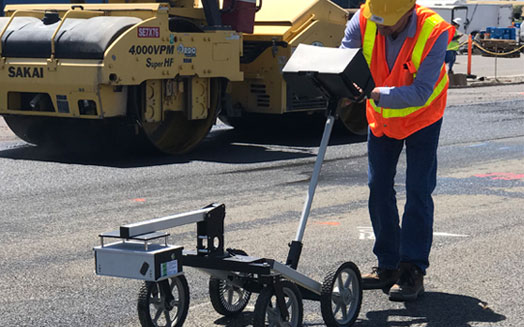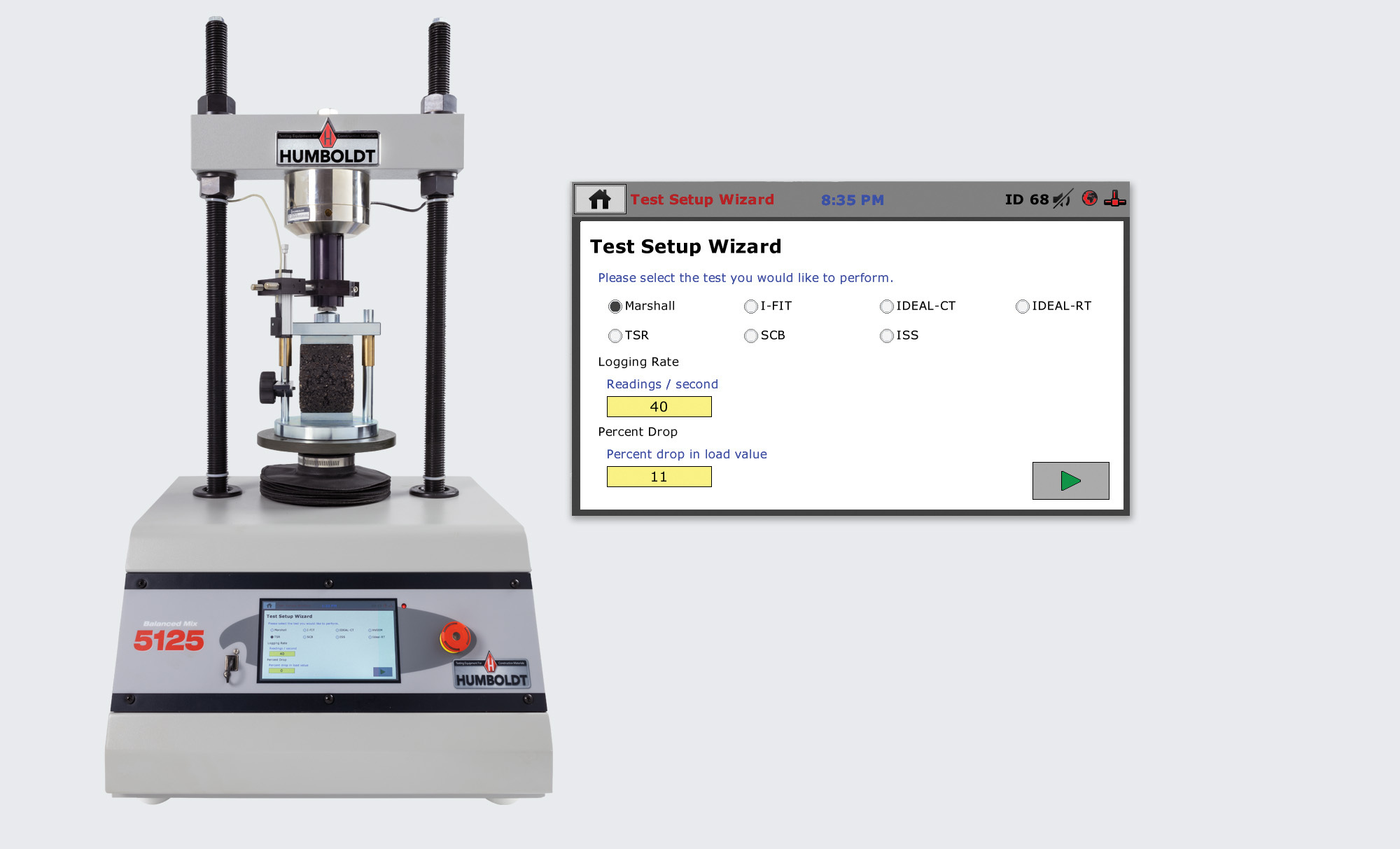In 2015 a FHWA task force defined balance mix design (BMD) as an “asphalt mix design using performance tests on appropriately conditioned specimens that address multiple modes of distress taking into consideration mix aging, traffic, climate and location within the pavement structure”. Essentially, balanced mix design involves designing a mix that is specific to the intended application, through the incorporation of multiple mechanical tests, which examine a particular form of distress.
David Newcomb, Ph.D., Texas A&M Transportation Institute -Texas A&M University System, puts it in more simple terms “A balanced mix design (BMD) sets a maximum asphalt content based on the rutting criterion and a minimum asphalt content based on cracking criterion.”
Superpave mix design is currently used in all but one U.S. state. The original intention of Superpave had been to test trial mix designs with performance tests in a similar way to the Marshall and Hveem methods. Devices such as the Simple Shear Tester (SST) and Simple Performance Tester (SPT, now AMPT) were attempts at the performance tests, but the expense of the equipment and complexity of the tests made them unpopular in many labs.
As a result, the Superpave mix design system was implemented only with volumetric elements. Many factors have changed since the development of Superpave. These include:
- Lower binder content in Superpave (AASHTO M323) mixtures
- Increased use of recycled binder, RAP, RAS, softening agents/rejuvenators
- Other additives such as fibers, ground tire rubber, etc.
Progressive DOTs have been looking for simple performance tests to supplement volumetrics. The first edition used was the APA or Hamburg test. Added to many state specifications, these tests have been successful in reducing rutting in mixtures for a number of years. Wheel tracking tests in various forms have been used in many parts of the world since the '40s, if not before. It is believed that if mixes perform well in laboratory rutting tests, mixes are unlikely to rut in the field.
Cracking Test
More recently, some professors have started to look at tests and ideas used in metallurgy and fracture mechanics. They have applied this methodology to asphalt mixture testing, often using simple, existing lab equipment. These tests are referred to as a cracking test and include the Louisiana SCB, the Illinois Flexibility Index, the Texas Overlay test and the IDEAL CT test. The cracking tests can be divided into two groups: Dynamic, which includes Bending Fatigue and Texas Overlay, and Monotonic, which includes Bending Fatigue, Louisiana SCB, I-FIT, IDEAL CT, and DCT.
The success of these tests has seen the emergence of Balanced Mix Design. As Balanced Mix Design and the cracking tests are relatively new, there is some nervousness at the idea of transitioning directly to this new approach. Furthermore, there are three general approaches towards the introduction of Balanced Mix Design.
 Rutting and IDEAL RT Testing
Rutting and IDEAL RT Testing


